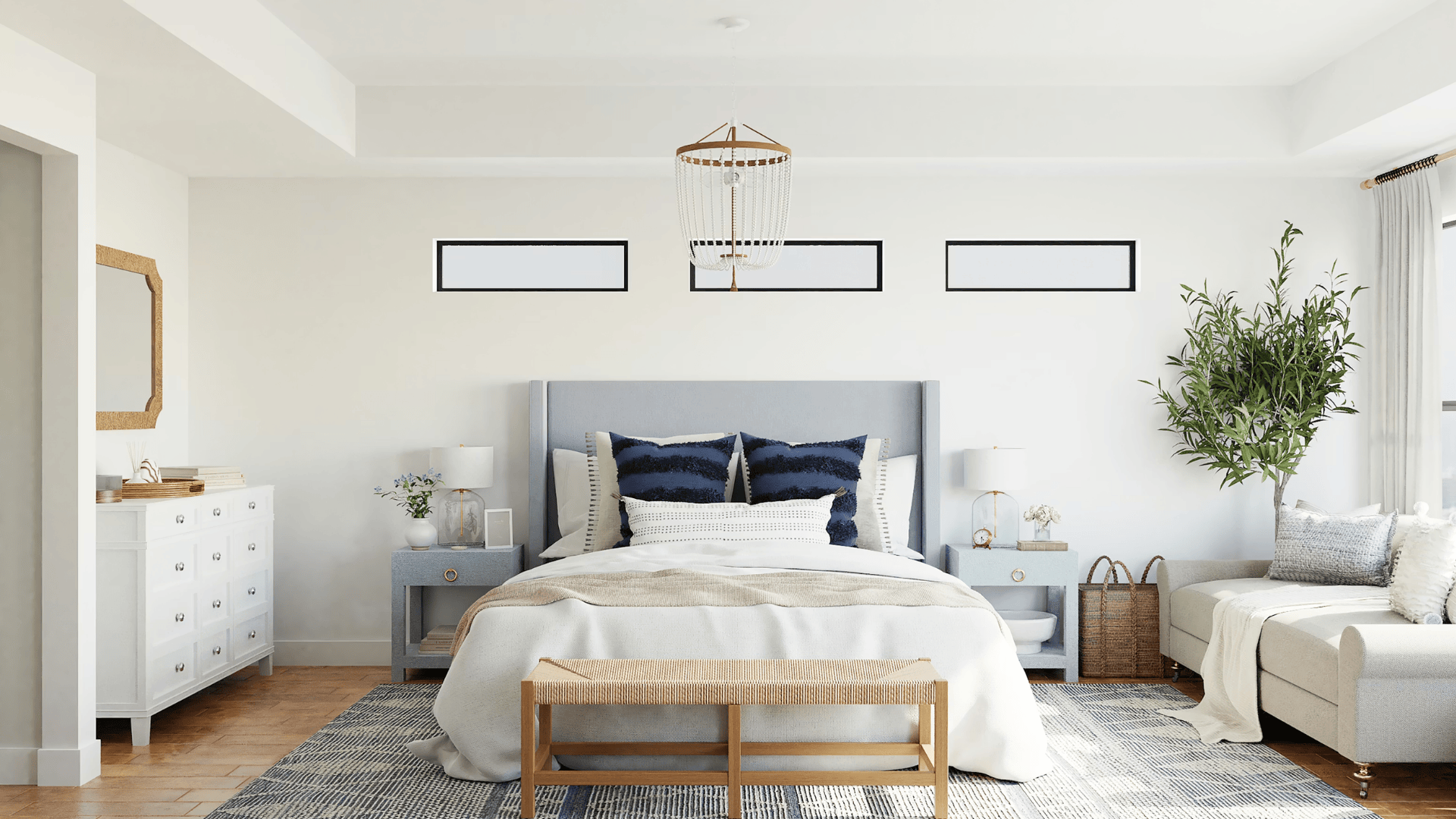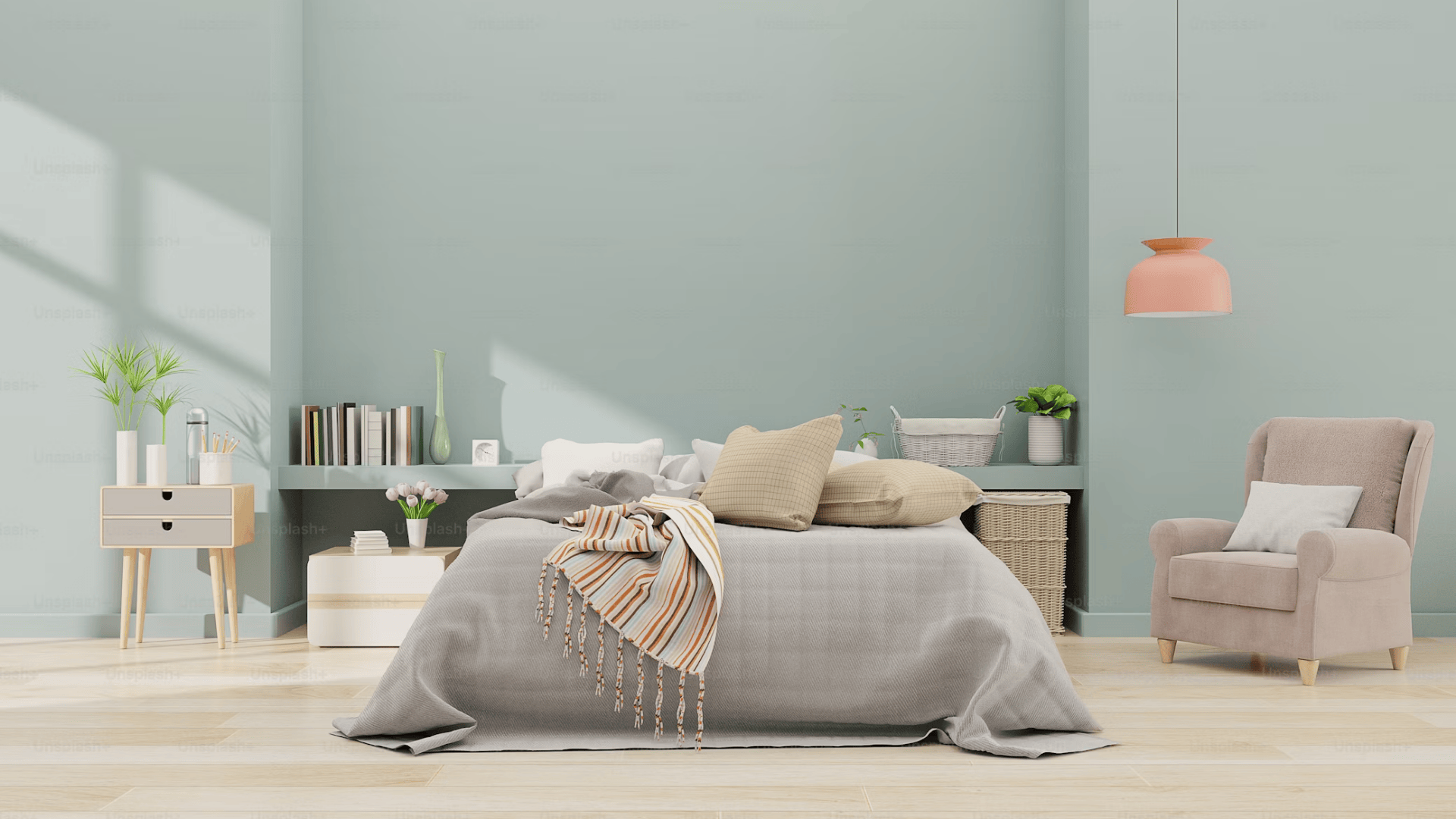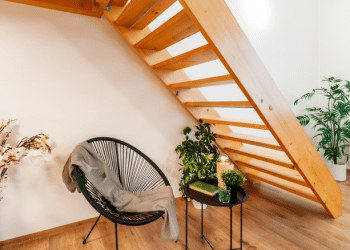Table of Contents

Your bedroom has a way of telling the truth about how you are actually doing. When the space feels peaceful, everything else feels a little easier. When it feels chaotic, your energy tends to follow. The goal here is to create a room that works with you, not against you, and that means shaping an environment that feels personal, intentional, and calm without tipping into anything sterile.
You do not need a full renovation or a shopping spree that leaves you questioning your life decisions. You just need a clear sense of what matters and a willingness to update the things that quietly shape the way you rest. When you shift the room with that mindset, the energy follows fast, and the ripple effect moves through your whole home.
Setting the Mood With Light and Layout
Lighting does more to your body than most people realize. Harsh overheads can make the space feel like a waiting room, and dim corners can flatten the room so it feels heavier than it should. A bedroom that truly supports you uses layers of warm, soft light that guide your brain toward rest. Table lamps on nightstands bring balance. Small accent lights warm up shadowed corners. A simple swap to warmer bulbs changes the entire tone of the room in ten seconds flat.
Then there is the layout. Look at what you see the moment you walk through the door. The first sight line should feel like an invitation, not a to do list. If the bed is cramped between mismatched furniture or blocked by clutter, the room will never feel right no matter how pretty the bedding is. Clear pathways, balanced furniture placement, and a sense of open air let your nervous system settle before you even hit the mattress.
Refreshing the Bedding With Healthy Choices
This is the part where comfort meets detail. Your bedding has daily contact with your skin, and choosing it thoughtfully changes how well you rest. Natural fibers breathe better and feel calmer against the body. Weight, weave, and texture all influence temperature regulation, and any fabric that traps heat works against you.
Then add the small steps that pull the whole room together. Wash bedding regularly for freshness, rotate pillows, and keep a simple rhythm of tidying the surfaces so clutter never wins. These routines form the core of healthy home tips, and they lift the bedroom into a zone that feels both restorative and ready for rest.
Getting Serious About Temperature and Comfort
Temperature is one of the biggest factors in real rest, and most bedrooms run slightly warmer than ideal. Breathable bedding helps, but your mattress matters even more. This is where comparing the best cooling mattresses online is smart, not because you need the most expensive option, but because your body responds instantly to a surface that manages airflow and heat more effectively. Cooling foam, hybrid structures, and breathable covers each change how your body releases warmth through the night.
Design choices play a role too. Heavy drapes can hold heat, while lighter fabrics on windows help the room stay naturally balanced. If your space runs warm, consider a low profile fan pointed away from your face so the air moves without feeling like a wind tunnel. Small climate decisions compound and build a room that feels naturally restful.
Clearing Visual Noise and Raising the Calm Factor
Clutter is the enemy of clarity. It is amazing how quickly small piles can make the room feel smaller. A sanctuary level bedroom understands the difference between personal items and visual noise. Keep what you actually love and use, then give the rest a swift exit. Even moving a few items to another space can create enough breathing room to shift the entire feel of the bedroom.
Choose surfaces with intention. Nightstands with drawers hide the things you need but do not want to see. A small tray on a dresser adds enough structure to keep daily items contained. These are small, almost invisible decisions, but they steady the room and give your eyes a place to rest.
Letting Texture and Color Do the Emotional Work
Color and texture shape the emotional temperature of your room faster than anything else. Soft, layered textures pull in warmth and character without crowding the space. Think throws, small woven accents, and rugs that soften sound and ground the room. Color choices should feel like an exhale. Muted tones bring calm. Richer hues create coziness. If you prefer neutrals, let texture bring the personality so the room does not fall flat.
Scale matters too. Oversized art with simple composition brings depth without overwhelming the room. Subtle patterns or natural materials keep the atmosphere grounded. Every element works together like a quiet conversation that guides the mood without demanding attention.
Your bedroom is the one place in your home that exists purely for rest and recovery, and giving it thoughtful attention pays you back every single day. When you shape it with warmth, intention, and comfort in mind, the entire space starts working on your behalf. A calm bedroom supports a calm mind, and a calm mind supports everything else you do.








